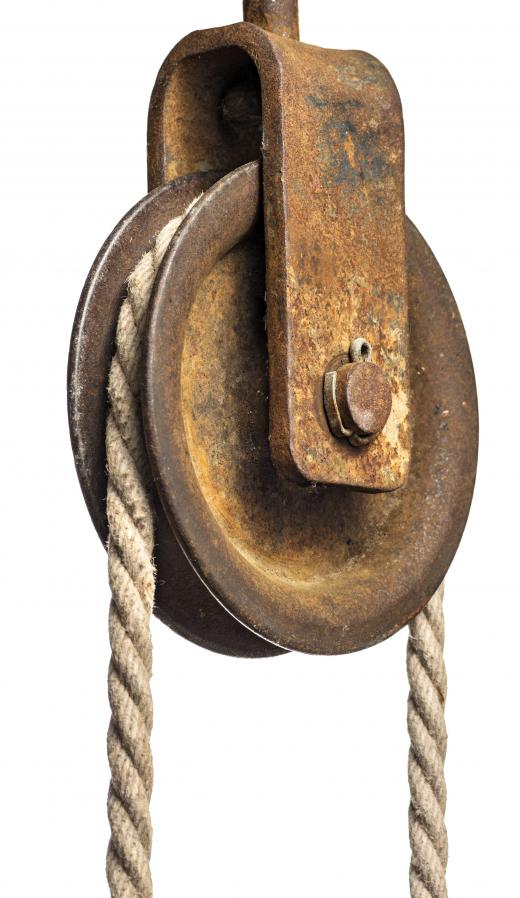The pulley, also known as a rope pulley block, has long been used to reduce the amount of force required to lift an object. A rope pulley block is comprised of a grooved wheel, casing, and some sort of attachment point — usually in the form of a hook. Pulley blocks work by distributing the weight of an object over multiple points of contact through the use of friction. A pulley is one of the six simple machines, which are mechanical devices that are used to change the magnitude or direction of force. When two or more pulleys are used together, it is referred to as a block and tackle.
The primary element of a rope pulley block is the grooved wheel in which the rope, cable, or chain rides. This wheel is connected to the casing by an axle running through the center of the wheel. The pulley system must then be attached in some fashion in order to be used. While there are many ways to attach a pulley block to its surroundings, the most common way is via a hook located at the top of the pulley that allows the unit to be hung from an object.

The simplest effective rope pulley block system, or block and tackle, always involves at least two pulley blocks, which yields a force advantage of two. In order to lift a 100-pound (45.36-kilogram) weight from the floor of a building in this manner, a single pulley is attached to the weight and another to the ceiling above the weight. A rope would be attached on one end to the ceiling, threaded through both pulleys, and be pulled by a force of 50 pounds (22.68 kilograms) on the free end in order to lift the weight.

More complicated rope pulley block systems can yield even higher advantage ratios through the use of compound pulley systems. Many cranes use a pulley system where two movable pulleys are connected together by a single axle shaft, with the lifting hook situated between the two. A third fixed pulley is mounted perpendicular to the two movable pulleys on the crane's frame. The lifting cable is then connected to the frame on the side opposite of the fixed pulley, as is the lifting winch. The cable runs through the first movable pulley, up to the fixed pulley, back down to the second movable pulley, and up to the lifting winch to create a lifting advantage of four.
